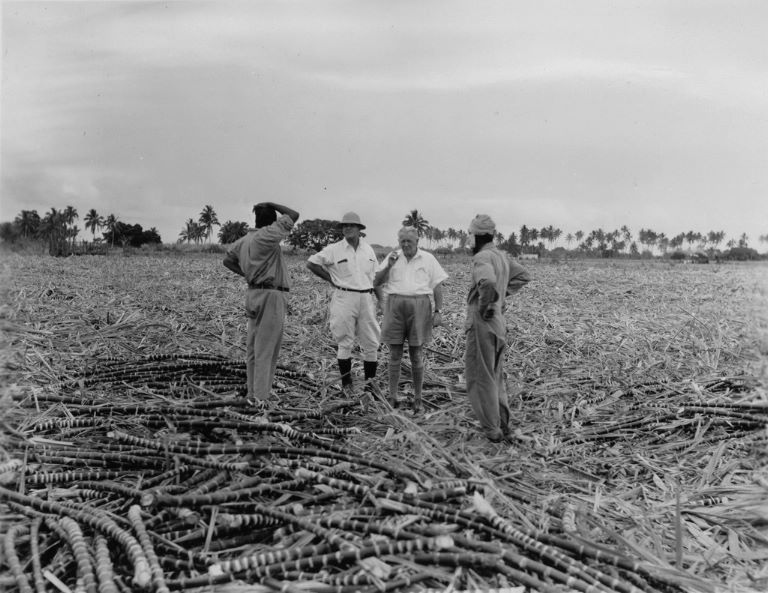As sugar surged to popularity, becoming the most sought-after and economically viable crop of the time, it quickly grabbed the attention of the bureaucrats in office at the time.
Governor Sir Arthur Gordon, whose policies helped shape Fiji’s governing in the 1870s, was a key figure in the sugar trade.
Following the plummeting cotton trade, planters on the island were on the lookout for a new crop that would bring in the desired yield and end all financial woes.
The answer came in the form of sugar. Planting the crop was one thing, however, Gordon quickly realised the need to bring in labourers to tend to farming.
Otherwise, this agricultural venture would prove to be fruitless as well. The decision was made to source labour that would prove “cheap” in the long run. India, also a British colony at the time, was the ideal place for this.
Dr Michael Moynagh, in his Pacific research project under the Australian National University, outlined the experience of Fiji’s sugar industry in his work titled Brown or White? A History of Fiji’s Sugar Industry 1873-1973.
“Drawing on his experience in Trinidad and Mauritius, in 1875 Gordon proposed that Indians be imported under five-year indentures. He estimated the total cost to the planter of wages, transport, etcetera at around £14 per head per year,” he writes.
“A number of settlers, like Rupert Ryder, initially favoured the idea, but most Europeans eventually opposed it. This was not surprising since E L Layard had estimated in 1874 that the annual cost of ‘Polynesians’ was £7 a head.
“Settlers were understandably appalled by the prospect of a 100 per cent increase in their immediate labour costs, even though Indians were likely to be cheaper in the long run, especially since they would remain in the colony for ten years whereas ‘Polynesians’ usually stayed for only three.”
Dr Moynagh notes the main focus was to enabling a labour force that would persist and continue working for a longer period of time. He writes that Gordon stuck to this requirement after arranging for Indian labour to be imported from 1879.
He writes that labourers were to be indentured for five years and have the right of a free return passage to India after ten. “Employers were to pay twocost of the passage to and from Fiji, and Government onethird.
Wages were to be one shilling a day and five and a half days were to be worked.” By the time the indentured system ended d in 1916, about 60,553 immigrants were brought in to work on cane plantations.
Noted academic Dr Brij Lal also notes in his book, In the Eye of the Storm: Jai Ram Reddy and the Politics of Postcolonial Fiji, this increased interest brought with it another conundrum. There was a need to not only grow the market and sell sugar overseas, but a centralised miller needed to be brought in to help elevate the industry.
“To grow it on a scale that could drive the economic engine of the colony, Gordon invited the Australian Colonial Sugar Refining Company (CSR),” Dr Lal noted.
“The CSR, established in 1854, was Australia’s largest grower and miller of sugar cane. The company arrived in Fiji in 1882 and remained there until 1973, three years after Fiji became independent.
“The CSR’s story in Fiji is central to our narrative in several vital respects. By 1900, CSR had become the largest miller of sugar cane in Fiji, producing around threequarters of the total output. Soon it would become a monopoly.
“For many Indians in the sugar belt, the company was the Government, sarkar. Its word was law. Until the early 20th century, the CSR grew all its cane on its own estates by employing Indian indentured labour.”
Later, as the indentured system drew to an end, so too did the labour force that initially worked on the plantations. Some chose to leave Fiji and return to their homeland while the rest saw an opportunity to settle in Fiji.
Thus, the leasing system was started by CSR in an effort to continue production of sugar with the labour that was available.
In his book, Dr Lal also notes that a decade after the indentured period ended, CSR had begun to sell off its plantations to individual European planters. Many of these planters were former employees and plantation managers of CSR.
“These plantations too were worked by indentured labourers, but as the shortage of labour loomed, following the impending end of indentured emigration in 1916, the planters sold their estates to Indians (those who could afford to buy them).
“In the 1920s, the CSR began to split up its plantations into ten-acre plots and leased them out to former indentured labourers. The ten-acre farm system remained the pattern for Fiji throughout.
“The ten-acre plot was big enough, with good husbandry, to be economically viable, but not too big for the growers to become independent, or independent minded.”
Many of the farmers who initially established farms under this system would go on to become generational farmers, with their children and grandchildren continuing to farm cane in the years to come.
Subsequently, the production of sugar was boosted by the investment that CSR had poured into the country in terms of machinery and mechanisation.
The start of sugar mills across the country was a game changer, and the facilities remain until date.
As many as 34 mills were established in the early days, however, because of poor crop production, many were shut down. Out of the 34, only four mills survived past independence. Today, of the four, only three are operational.
• Next week, we’ll look at how CSR set up a milling network around the country.



